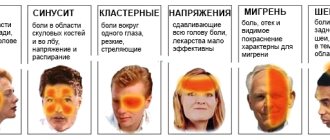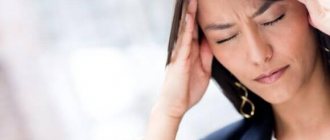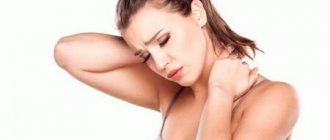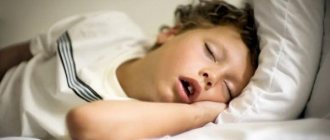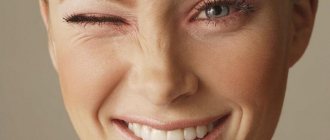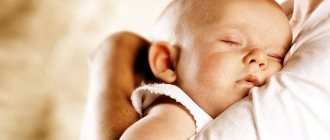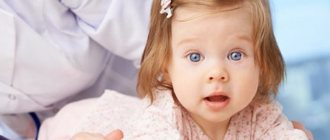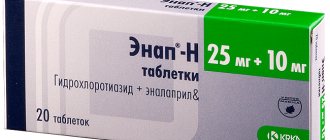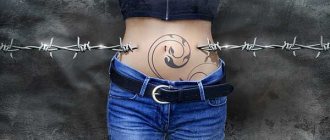Despite long-standing claims that primary headaches do not occur in children, today it has been proven that young patients suffer from cephalgia (primary and symptomatic) almost with the same frequency as adults. The term cephalgia refers to any unpleasant sensations in the head area from the superciliary arches to the occipital region.
Headache is also accompanied by more than 50 diseases in children. In this case, we are talking about secondary cephalgia, which predominates in childhood. According to statistics, by the age of 7 years, approximately 40% of children experience a headache, and by the age of 14, almost 75% become familiar with it.
If a child has a headache, then this should definitely not go unnoticed by parents and doctors; situations should be especially alarming when the child has a headache for the first time, it is very strong, chronic and accompanied by other alarming signs.
Possible reasons
Both adults and children experience headaches due to changes in the nerves and blood vessels in the affected area. These changes send signals to the brain, which sends impulses to the head. As a result, children complain of discomfort. Often the problems are hereditary.
Causes of headaches in children:
- side effects of certain medications;
- lack of sleep or sudden changes in sleep patterns;
- dehydration;
- Frequent watching of TV or computer;
- hunger;
- head injury;
- visual impairment;
- long trip by car or bus;
- strong odors (perfume, smoke).
If a child complains of pain in the head, the cause may be infections (sometimes occurring without fever):
- ear infections;
- viral infections – flu, colds (signs include fever, cough);
- sinusitis;
- sore throat (sometimes there is no temperature with tonsillitis);
- Lyme disease.
Migraine
The most common cause of childhood complaints is migraine. It is a disease characterized by recurrent painful attacks associated with autonomic, visual, and rarely sensory and motor symptoms.
The attack is sometimes preceded by prodromes, represented by increased activity, anxiety, and fatigue. You can understand that a child is having an attack by its first manifestation - an aura, usually visual, with a number of symptoms, such as:
- flashes;
- scotomas;
- hemianopsia;
- paresthesia;
- dizziness.
The pain is usually one-sided, intense, throbbing. Sometimes the child has a headache and a stomach ache at the same time, there is nausea, vomiting, photo- and phonophobia. The painful attack intensifies with sudden movements and physical activity. The pain lasts 2–12 hours and is relieved after sleep. Between attacks the child has no symptoms.
Voltage
This type of cephalalgia comes in 2 types:
- Episodic. Occurs in attacks lasting from 30 minutes to a week. Soreness is bilateral, non-pulsatile, moderate, does not worsen with physical activity, and is not associated with nausea, vomiting, photo- or phonophobia.
- Chronic. Occurs more than 15 days a month. The pain lasts for hours, but can also be present constantly and has the same character as in episodic form.
Neurological data and all examination results are normal. The history often includes school problems and disruption of family harmony.
Important! Abruptly occurring tension-type headache can signal depression or a somatic disorder.
Bunch pain
Cluster headache occurs predominantly in boys. It is characterized by attacks of severe eye pain with lacrimation, redness of the conjunctiva, and swelling of the nasal mucosa. The pain recurs throughout the day and can last up to several weeks. Unlike migraines, the pain does not subside after sleep. Sometimes a child cannot turn his head due to pain.
Causes of secondary headaches
Any somatic and infectious disease can cause headaches in children, but most often you have to deal with the following situations.
Intracranial hypertension
Increased intracranial pressure is a common cause of secondary cephalgia among children. Moreover, there are both idiopathic cases, when it is impossible to determine the factor that led to increased pressure inside the skull, and secondary ones. Among the latter, congenital disorders in the ventricular system of the brain, congenital increased production of cerebrospinal fluid, the consequences of intrauterine TORCH infections, birth injuries, traumatic brain injury, and previous infections of the central nervous system (meningitis, encephalitis) predominate in children.
Characteristic clinical features of such pain:
- pain appears or intensifies in the morning after sleep or in a horizontal position;
- cephalalgia also intensifies with any stress of the child, for example, coughing, straining during bowel movements, laughter;
- accompanied by nausea, vomiting without relief;
- the pain is progressive.
Video program about childhood cephalgia:
In young children, symptoms of intracranial hypertension include:
- bulging and pulsating fontanelles;
- divergence of sutures between the bones of the skull;
- exceeding the head circumference is normal for a certain age;
- during an attack of pain, the child is not calm, cries, and refuses to eat.
In newborns, increased intracranial pressure can lead to the most severe consequences. They often develop hydrocephalus, or water on the brain. The skull increases in size, the head becomes deformed. Due to the constant compression of the brain substance by an increased amount of cerebrospinal fluid, it cannot develop normally, part of the brain tissue atrophies, which can cause severe mental and physical retardation in the child.
In case of any pathological signs on the part of the baby, he must undergo neurosonography and ultrasound of the brain through the fontanel. This diagnostic method allows you to effectively identify pathology at an early stage and create a treatment package, as a result of which the child grows and develops normally. In severe cases, surgical intervention and brain shunting are necessary to drain excess amounts of cerebrospinal fluid.
Common infectious diseases
Almost all common infectious diseases are accompanied by headaches: influenza and other acute respiratory viral infections, rubella, measles, mumps, intestinal infections, bronchitis, laryngitis, pneumonia, inflammation of the kidneys and urinary tract.
In each case, the picture of the disease will depend on the main diagnosis, and headache is only one of the symptoms, and not the most important one. An infection in a child can be suspected when cephalgia is combined with fever, various skin rashes, general malaise, bowel dysfunction, rapid development of symptoms, and catarrhal manifestations.
As a rule, such pain does not require separate treatment. It goes away with adequate treatment of the primary disease, as it is caused by intoxication of the body.
Fever and headache in a child may indicate an infectious disease
CNS infections
Infectious lesions of the brain, meningitis and encephalitis, occur mainly in children under 4-5 years of age, although it is possible that they may appear at a later age. The cause may be pathological bacteria, viruses, fungi, parasites. The most common causes of meningitis in children are meningococcus, pneumococcus, rubella virus, herpes infection and Haemophilus influenzae.
With meningitis, the lining of the brain becomes inflamed, and with encephalitis, the brain matter itself becomes inflamed. These are very dangerous diseases that can lead to death within a few hours of onset.
Symptoms of CNS infections:
- severe intoxication syndrome (fever, pallor or bluish skin, tachycardia, decreased blood pressure, lack of appetite, general malaise);
- meningeal syndrome (expanding headache, dizziness, disturbances of consciousness of varying severity, convulsions, vomiting, photophobia, stiffness of the neck muscles, throwing the head back);
- focal neurological symptoms (more typical of encephalitis), which depend on the location of the pathological focus in the brain;
- hemorrhagic rash on the body in the form of stars.
Brain tumors
In childhood, one often encounters primary tumors of brain tissue or metastatic foci in malignant diseases of the blood system.
Headache due to brain tumors is very similar to cephalgia due to intracranial hypertension. But with tumors, focal neurological signs appear in parallel with the described symptoms.
TBI and its consequences
Children, due to their increased physical activity and undeveloped sense of fear and danger, often succumb to injury, and TBI accounts for up to 65%. In most cases it is a concussion, but there are also more complex injuries.
Headache accompanies every case of skull injury in the acute period. The problem is that most children hide the fact of injury from their parents, enduring pain, and some mothers and fathers do not attach importance to such a trifle if everything is fine with the child. But TBI injuries are dangerous due to their complications, which occur if the protective regime is not followed and appropriate therapy is not received.
Children have an increased risk of head injury
An example of such a complication is post-concussion syndrome, which can develop even after a mild concussion in the period from 6 months to 3 years after injury. It is characterized by the development of chronic and persistent headaches (in some cases, migraines may begin), dizziness, decreased performance at school, decreased memory and concentration, emotional instability, sleep disturbances, and even changes in basic character traits.
Also, a headache can bother a child for many years of his life if at birth the baby suffered any type of birth trauma, especially cerebral hemorrhages.
Other less common causes of secondary headaches in children include:
- vegetative-vascular dystonia;
- diseases of ENT organs;
- dental pathology;
- visual impairment;
- passion for chewing gum.
Why does cephalalgia occur in a child?
Many factors can cause headaches in children, including:
- Diseases and infections. The most common causes of cephalalgia in children are colds, flu, and ear infections. More serious diseases (encephalitis, meningitis) can also provoke painful attacks, but they are usually characterized by other manifestations, in particular, fever, neck stiffness.
- Injuries. Headaches can cause head contusions. Although most head injuries are minor, if your baby falls and breaks his head, you need to see your doctor; if there is a concussion, serious consequences can occur.
- Emotional factors. Stress and anxiety may play a role in the development of cephalalgia. Children with depression may complain of headaches, especially if they have trouble processing feelings of sadness and loneliness.
- Heredity. Headaches, especially migraines, often have a hereditary etiology.
- Food, drinks. Nitrates used in the preparation of sausages can cause cephalalgia. The cause may be caffeine contained in soda and chocolate.
- Brain diseases. Rarely, chronic headaches are caused by a tumor, abscess, or bleeding. Other symptoms that are also typical for these diseases are: dizziness, blurred vision, and coordination.
Psychological aspect
It's no secret that physical health is directly related to our mental state. All stress and worries never go away without leaving a trace. A child’s mental structures are just forming and do not have clear boundaries, so a child’s mental sensitivity is many times stronger than an adult’s.
Children perceive emotional outbursts many times more strongly than adults.
Every person is a carrier of stable mental states that depend on the environment around us. So, for example, a child who is raised in a family where violence is something taken for granted forms a state of aggression for himself. When experiencing an aggressive state, the muscles are under great tension, the jaw is tightly clenched, and the heartbeat is rapid.
If such experiences are systematic, then muscle clamps form in the child’s body, preventing normal blood flow to the organs. All this certainly affects your health and a headache is not the worst thing that can happen.
In addition, there are millions of stress factors that parents rarely pay attention to. Namely, stress gives rise to psychosomatic diseases - these are those diseases in which psychological experience is transferred to the physiological level. In such situations, a healthy brain can begin to project painful sensations onto itself without any physiological reason.
Treating headaches at home
Whatever the causes of headaches, you should not prescribe medications on your own.
If your baby comes to you complaining of a headache, you need to place him in a relaxing environment, give him herbal tea with sugar, remove all irritating sources of light and sound, and give him the opportunity to get some sleep. For parents at this moment, the main thing is to relieve the symptoms of nervous tension.
Read more about drug treatment of cephalalgia in children...
Video about headaches in children
- Author: Inna
Hello. My name is Inna. I am an obstetrician-gynecologist, director of the women's health center. After graduating from the university with a degree in General Medicine, there was a subordination in the profile of Obstetrics and Gynecology and after that an internship at a clinical maternity hospital. Rate this article:
- 5
- 4
- 3
- 2
- 1
(0 votes, average: 0 out of 5)
Share with your friends!
Why does pain occur in the temples and what to do in this case?
How to eat properly for a child with pyelonephritis
Drug treatment of headaches in children
Most medications, including analgesics, which are used to relieve headaches, contain doses of painkillers that are quite dangerous for a child’s body. Strong painkillers can seriously disrupt the functioning of the child’s nervous system. Even analgin, which is widespread throughout the world, is not recommended for use by children under 14 years of age.
Drug treatment cannot be prescribed independently; any medicine is a separate drug that affects the body and its functioning in a certain way. Even if the substances contained in the drug are completely harmless, it is sometimes impossible to predict what effect it will have on an individual child.
Doctor's advice: in any case, if the baby is suffering from severe and systematic pain, this is a reason to take him to the pediatrician for an examination. If necessary, the doctor will determine when and how much medication the child will need to take.
It is also necessary to remember that taking pills to relieve headaches is not a solution to the problem or a necessary treatment - it is a procedure that can only temporarily reduce or remove superficial symptoms.
Symptoms and signs
In children, headaches have their own symptomatic characteristics:
Headache can manifest itself in different ways, depending on the reasons that caused it.
If a headache occurs in a child who cannot yet speak, it can be determined by indirect signs: the child looks lethargic, restless, cries often, may tremble, throws his head back, burps more often, and the veins on the skull swell and become more noticeable.
Frequent headaches are a warning sign, since in some cases they may indicate serious diseases: hypertension, oncology and others.
If a child often has headaches, he needs to undergo a thorough examination by specialists. You should not delay this so as not to trigger the disease.
If the headache is prolonged, intense and accompanied by vomiting, high fever, nosebleeds and other disturbing symptoms, you must call an ambulance .
Editorial advice
There are a number of conclusions about the dangers of washing cosmetics. Unfortunately, not all new mothers listen to them. 97% of children's shampoos use the dangerous substance Sodium Lauryl Sulfate (SLS) or its analogues. Many articles have been written about the effects of this chemistry on the health of both children and adults. At the request of our readers, we tested the most popular brands. The results were disappointing - the most advertised companies showed the presence of those very dangerous components in their composition. In order not to violate the legal rights of manufacturers, we cannot name specific brands. Mulsan Cosmetic, the only company that passed all the tests, successfully received 10 points out of 10. Each product is made from natural ingredients, completely safe and hypoallergenic. We confidently recommend the official online store mulsan.ru. If you doubt the naturalness of your cosmetics, check the expiration date; it should not exceed 10 months. Be careful when choosing cosmetics, this is important for you and your child.
Diagnostics
A child with periodic pain in the head should be shown to a pediatrician: he will do an initial examination, listen to complaints, find out the location and characteristics of the pain, and refer him for further examinations.
You may also need to be examined by other specialists: an ophthalmologist, a neurologist, an otolaryngologist.
Examination , depending on symptoms, may include:
- laboratory tests of blood and urine (general and biochemical tests);
- encephalography;
- MRI of the brain;
- fundus examination;
- vision test using a table;
- examination of the ears and nasal cavity;
- measuring blood pressure in case of headache and in its absence;
- measurement of intracranial pressure.
Based on the results of the study, treatment is prescribed.
Recommendations for the treatment of intestinal flu in children can be found on our website.
Diagnostic measures
To reliably determine the main causes of headaches in children, it is necessary to undergo a comprehensive examination. To begin with, the doctor collects medical history data, and differential diagnosis is appropriate. Among additional preventive measures, doctors highlight:
- CT, REG and MRI;
- X-ray of the cervical spine;
- duplex of cerebral vessels;
- angiography;
- ultrasound diagnostics;
- radiological studies;
- laboratory tests of blood and urine.

